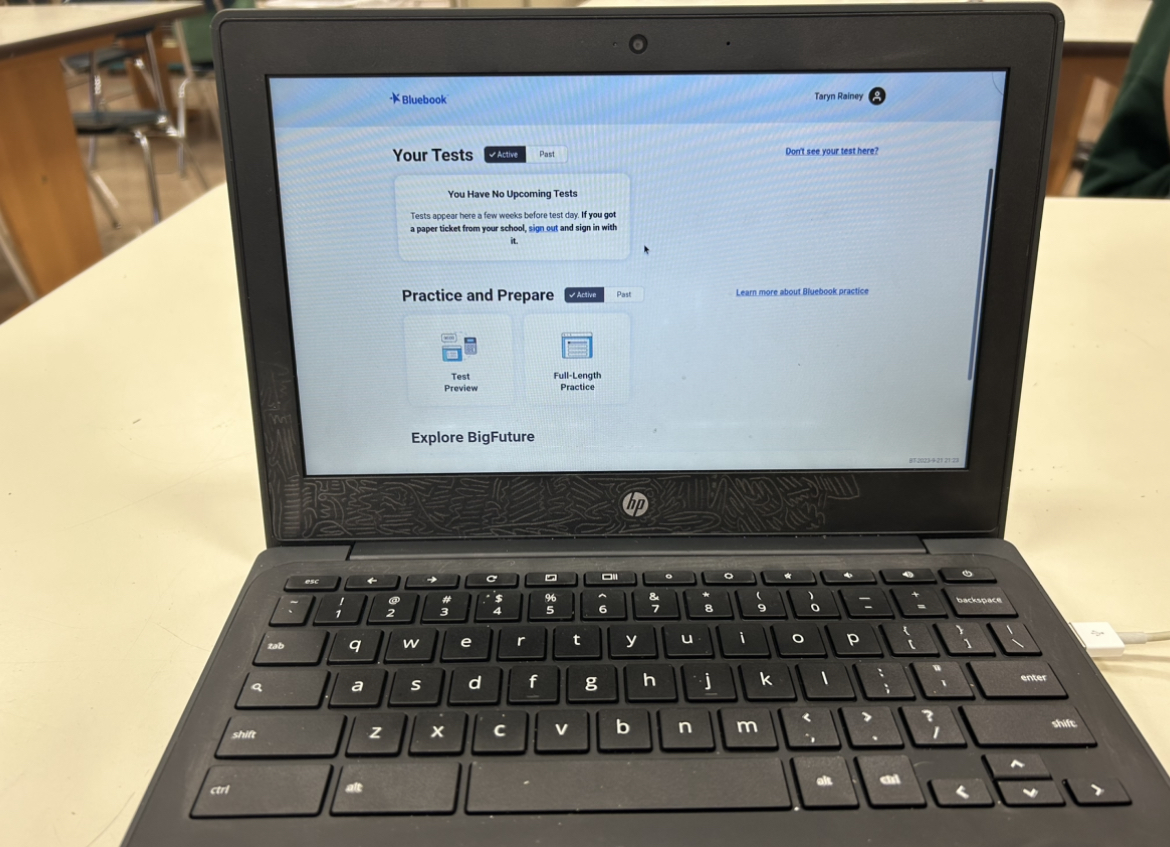It is Thursday Oct. 12, and the Junior Class is squished into the upper circle and east wing to take the PSAT. But this year, something is different; everyone is having to take it on their Chromebooks after it being on paper for almost 100 years.
Innovation is great in most cases; however, the SAT is a test that should not be modified as students have already adjusted to the paper version.
“I feel like it’s one of those things that should just go untouched,” junior Madalyn Sloan said. “There could be a lot more complications with it being online and more struggles for some people.”
However, students can take the test on paper if they are willing to take the test at an earlier date; otherwise, it will be online. Taking the SAT early may help students learn the questions or gradually increase their scores when they eventually have to take the SAT in the spring.
“It is really nice to get the nerves out of the way; your first one you’re really scared but then the second one’s not as scary,” senior Christina Smith said. “And every single time I took the SAT, my score went up.”
However, for those taking the SAT in the spring, there is one major difference between the regular standardized test and the new online one: the split modules.
By having two personalized modules per section, the online SAT is able to adjust its questions depending on the person’s previous answers. For many, this change may be able to help them answer questions that are more their level; however, this takes away the whole point of the SAT being standardized.
“I feel like it’s more of an even playing field for everybody if you’re getting the same questions and you’re all answering the same way,” Sloan said.
This also raises the question if the different modules will be scored differently or the same. Students have not been informed on if their initial answers affect their score, and if their second module questions are weighted differently.
However, since there are different modules, the test is shorter than the paper version as there is only one math section and one reading section when compared to the two and two of the original. Plus the reading section is significantly shorter, as the questions feed a person bits of the work at a time instead of all at once.
This bit by bit format may help people who quickly lose focus or are unable to read for long periods of time. However, students who enjoy annotating or being able to work on parts of the reading at a time may suffer due to the changes.
“Everybody can do a nice suggestion box and [we can] figure out what are some things that we could do to make it better for the students,” chemistry teacher Allison Tuleo said.
Though the new platform, BlueBook, gives people the ability to annotate, a student has to click multiple times and still type in their annotations; which takes away precious time that may be crucial to pacing. Also, students can bookmark the questions they are struggling on to come back to; however, they may run out of time before being able to return to those questions.
Many students complained about being unable to focus or getting headaches from the screen’s blue light for an extended period of time.
Though students may find taking the exam online difficult, the new format of the SAT is not going anywhere, and students will have to find a way to navigate through the obstacles.


